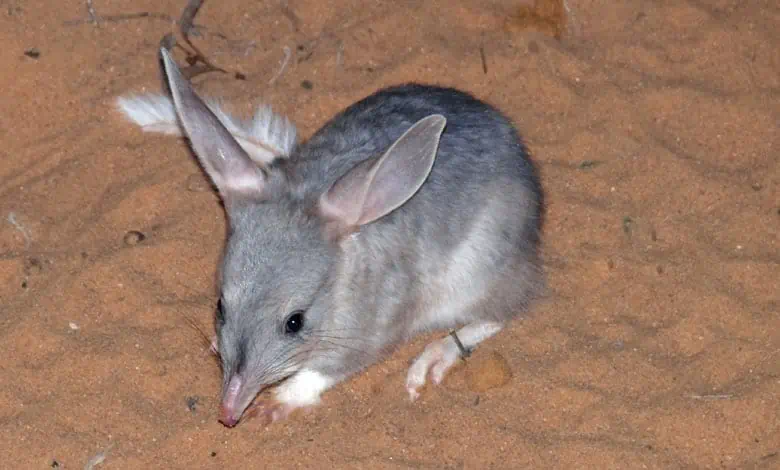Greater Bilby

They are members of a group of marsupials known as Bandicoots, and Bilbies have long pointed snouts and compact bodies. The Greater Bilby measures between 29 and 55cm (11 – 21 inches) in length. It differs from other Bandicoots with more prominent ears, longer tails and long silky fur.
The Greater Bilby is classified as ‘vulnerable’ and has gone from much of its former range. Sadly, due to habitat loss, and competition with feral cats and foxes, the reduction of Aboriginal burning practices have dramatically declined over the last 100 years. The Lesser Bilby (Macrotis leucura) is now believed to be extinct. More information is available on the Australian Government Department of Environment Greater Bilby page.
Habitat
The Greater Bilby lives in the sandy desert areas among spinifex grasslands. I saw my first Bilby when working out in the Tanami Desert, but unfortunately, it was dead, a casualty of our mechanised inland incursion.
Bilbies are nocturnal and have strong forelimbs and big claws for digging. While their sight is poor, their sense of smell and hearing is acute. The Bilby digs quite large burrows up to 2 metres (6.5 feet) deep in the sand country, where they live alone or in pairs. The marsupial likes freshly burnt country as this provides greater supplies of their preferred foods. They rarely need to drink and get moisture from insects and their larvae, seeds, spiders, bulbs, fruit, fungi and other tiny animals. Males can weigh up to 2.5kg (5.5lb), and females grow up to 1.3kg (2.8lb). The female has a backward-facing pouch to keep sand out while digging. They are only pregnant for 12 – 14 days, one of the shortest pregnancies of all mammals.

